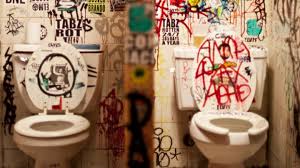
The subject of graffiti on city walls has been a major cause of concern in many urban developments, with many debating on whether the art is a form of expression or a blatant act of vandalism. While art activists often support graffiti as a form of expression and, thus, a medium of communication, both through feelings and images, others view the art form with disdain and would rather live in a world free of graffiti. Yet, another portion of the population needs to care more about graffiti art, choosing not to think much about the art form or its intended message to the audience (Cox et al., 2017). The negative connotation associated with graffiti has led to its misinterpretation worldwide, with graffiti artists often facing prosecution for displaying the art in public places, as they are accused of destroying the environment.
To appreciate graffiti as an art form, it is important first to understand its history: Where the artists get their inspiration from and the message they intend to pass using the graffiti. The art of graffiti, as we understand it, began in the late 1960s in New York and Philadelphia. It started as a form of recognition, with people writing their names and street address on subways (Arnold, 2019). Soon people started to fight for their spots on city walls, bridges, and other public spaces where they could display their artwork to the world. Today, art has evolved and is used as a medium to gain personal recognition and create awareness on various social issues, such as human rights and gender-based violence. Artists’ work and dedication in their graffiti artwork are similar to what one would put in any other canvas.
Due to people’s perception of graffiti and crime, individuals not very popular often feel insecure while walking in cities or towns painted with this kind of art. Countless reasons often contribute to a majority of society holding these assumptions (Cox et al., 2017). For instance, most films that I have watched, especially action movies, often portray crime-rampant cities or ghetto neighborhoods with graffiti either on sidewalks, shops, or walls, among other public areas. Such kinds of films or other forms of media have contributed to people associating art with a crime. Let me not say people because I fall among the specific population that has already bought the idea. As a result of these presumptions, I usually feel insecure each time I am in environments colored with extreme graffiti. Since some people perceive it as art, I am looking forward to loving the particular art. However, for it to be accepted public, artists exposed to the art should locate viable and suitable settings such as museums. Such a move will immensely contribute to changing individuals’ views of graffiti as illegal.
Otherwise, the presence of different kinds of graffiti depicting varied ideas and information in public streets will not seize to frighten individuals like me who have already bought the perception that it is illegal and is associated with criminals. Worth noting is that graffiti is an important part of human lives since it is an innovation of art people use to depict their inner ambitions or intentions.








I personally really appreciate this perspective and view graffiti as an art form. Arts that are typically more scene in underpriveledged areas such as graffiti often serve as social commentary pieces. With artists like Banksy revealing the true potential of illegal art forms, sometimes its these that make the largest statements. I love graffiti, with the exception of basic tagging or gang signs, as it makes the world seem slightly less dull. Adding color and spirit into places that are typically void of life.
Hey Anna,
I thought your point about the areas where graffiti is usually seen was really interesting, this is pretty common in big cities but I started thinking about graffiti in smaller cities instead. For example, in Portland Maine, there’s a big wall that was recently made a legal graffiti wall, and even though the same type of art can be seen in southern California, it’s associated with expression and a free lifestyle, but here in SoCal, it’s associated with street gangs. After all, you’re right and it is just another freedom of expression, encouraging the spread of thoughts and ideas, the negative connotations are, however, necessary for this type of art form. The antagonism is what creates a more meaningful message. Graffiti artists that are hired to create something legally, I think tend to be less impactful, more normalized and eventually desensitized.